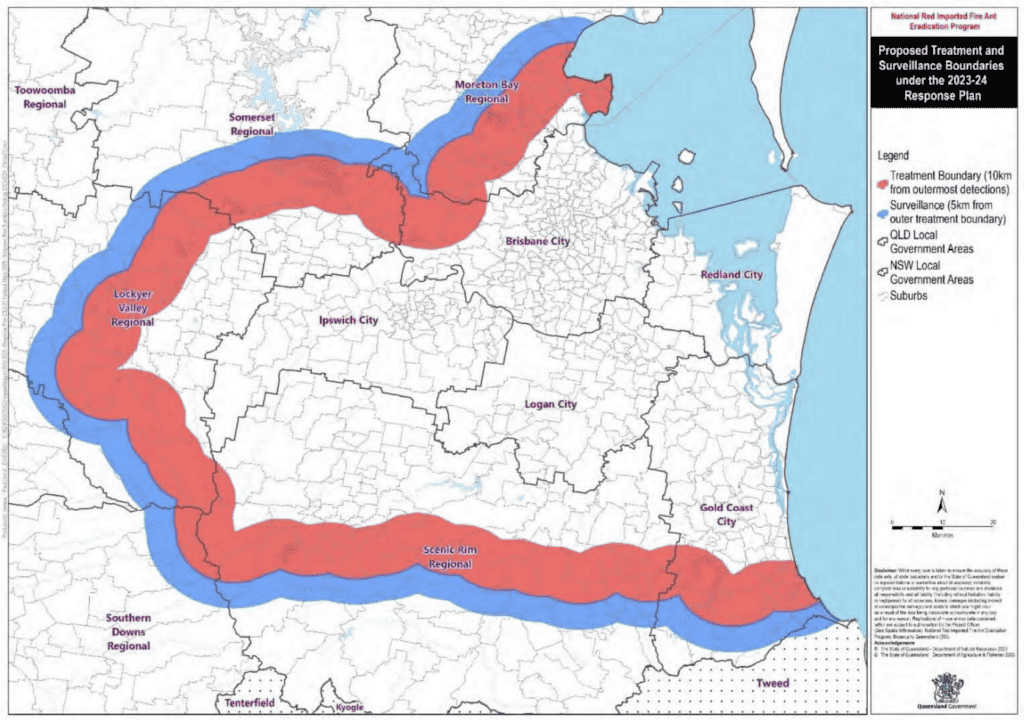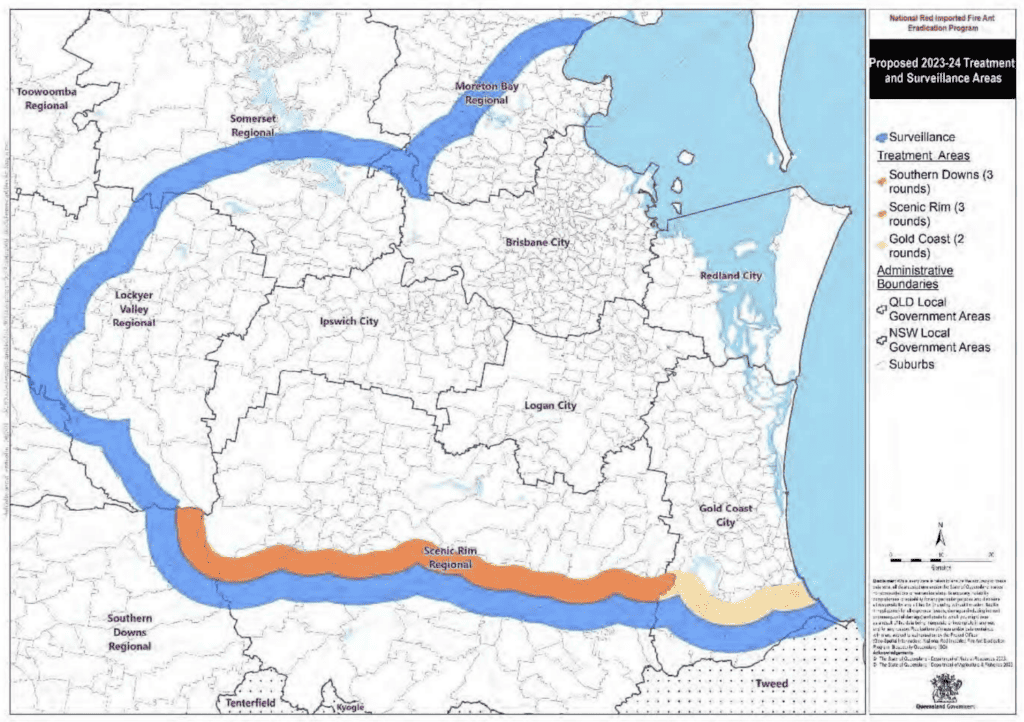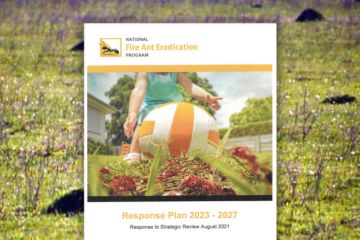Red imported fire ants (RIFA) are rightly considered a super-pest globally, causing high long-term public health, agricultural, economic and environmental costs in countries they invade. In Australia, federal and state governments have committed to eradicate an incursion in South East Queensland (SEQ) to avoid over $2 billion/year in expected economic costs, up to 140,000 extra medical consultations per year and devastation to native wildlife if they spread across the continent.
A government 2021 review report (which the Invasive Species Council successfully ensured was publicly released in 2023), found that ‘although the current program is significantly slowing spread of RIFA in and out of SEQ, it will not be able to eradicate or contain RIFA within the scope and budget’. The report recommended that eradication be pursued but concluded that it ‘will only be achieved with major changes in program scope, strategy, budget and governance, as well as new technologies’. It estimated the cost of eradication to be $2-300mil/year over 10 years to avoid over $2 billion in annual economic costs.
These leaked documents, which the Invasive Species Council has made public, outline the Queensland government’s response to that report and the budget and work plan required to achieve eradication.
At the July 13 2023 Agricultural Ministers Meeting, all governments committed to ongoing fire ant eradication and to this new response plan.
So far, only Queensland ($61 million or 10.3% of the total needed for 2023-37) and NSW ($95 million or 16%) have made public commitments in line with the cost sharing arrangement set out in these documents.
Appendix 4 sets out a significantly reduced work plan for 2023/24 due to delays in commitments by some governments to the full program budget. The implications of this reduced budget include:
- A greater than 50% reduction in the proposed treatment area for 2023/24 – from a 10km horseshoe around the entire fire ant infestation area (across the Moreton Bay, Somerset Regional, Lockyer Valley, Scenic Rim and Gold Coast Council areas) to a 5km strip only in the Scenic Rim and Gold Coast Council areas and no systematic eradication treatment in the other council areas.
- A reduction in the surveillance target from 17% to 8% of the area.
- Cuts to funding for compliance and public communication/education.











